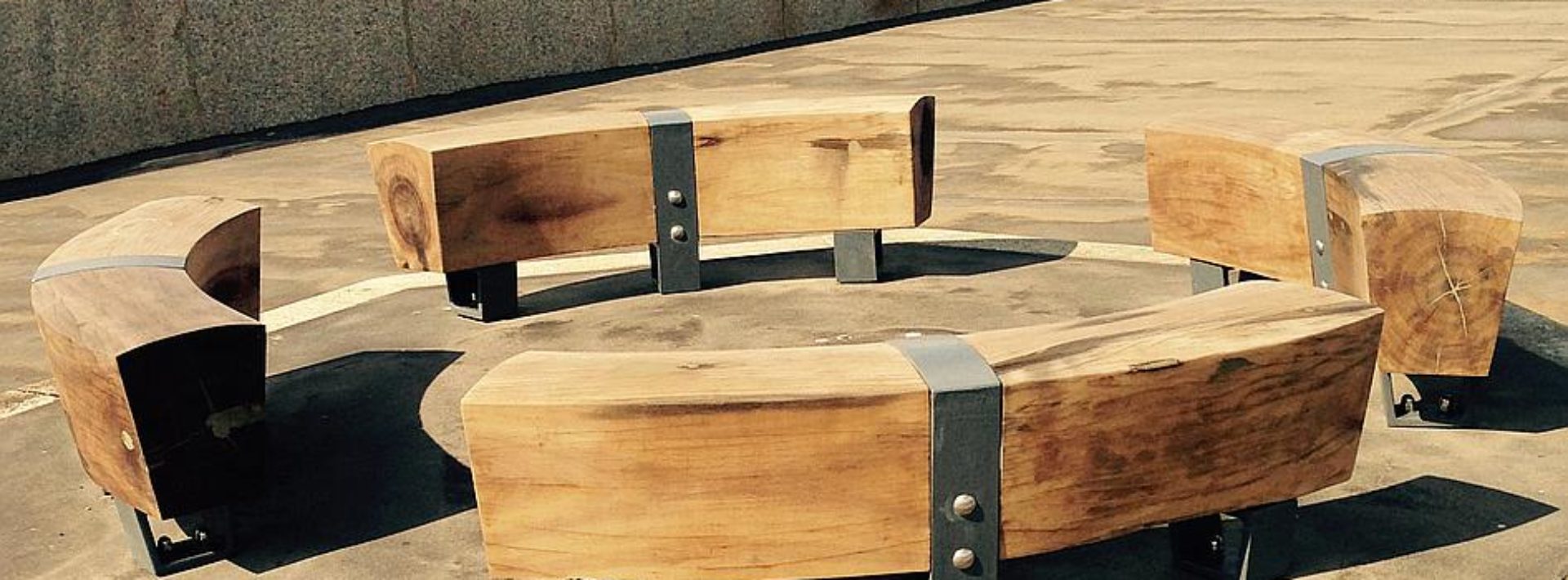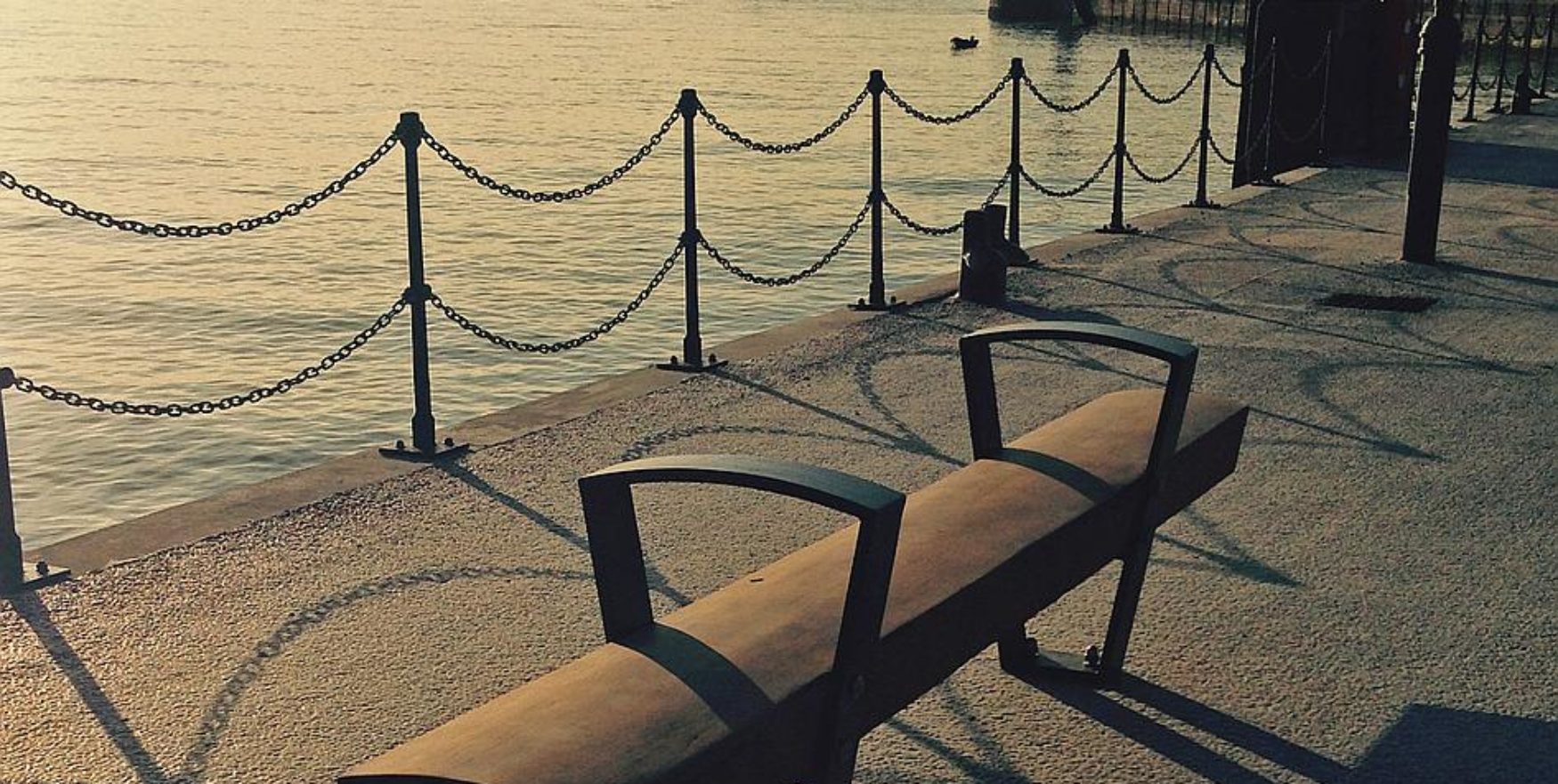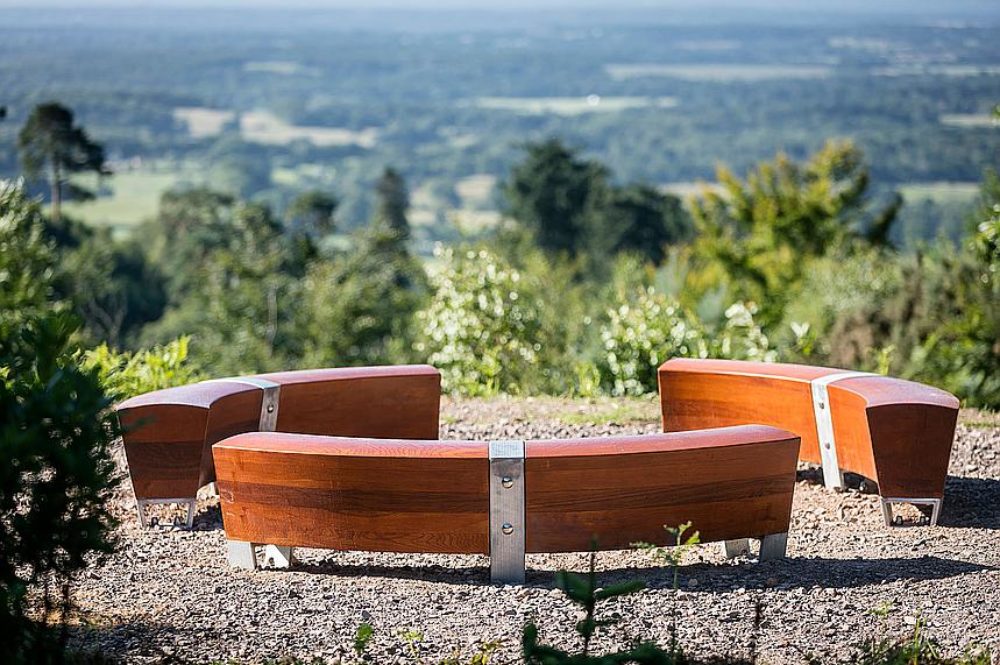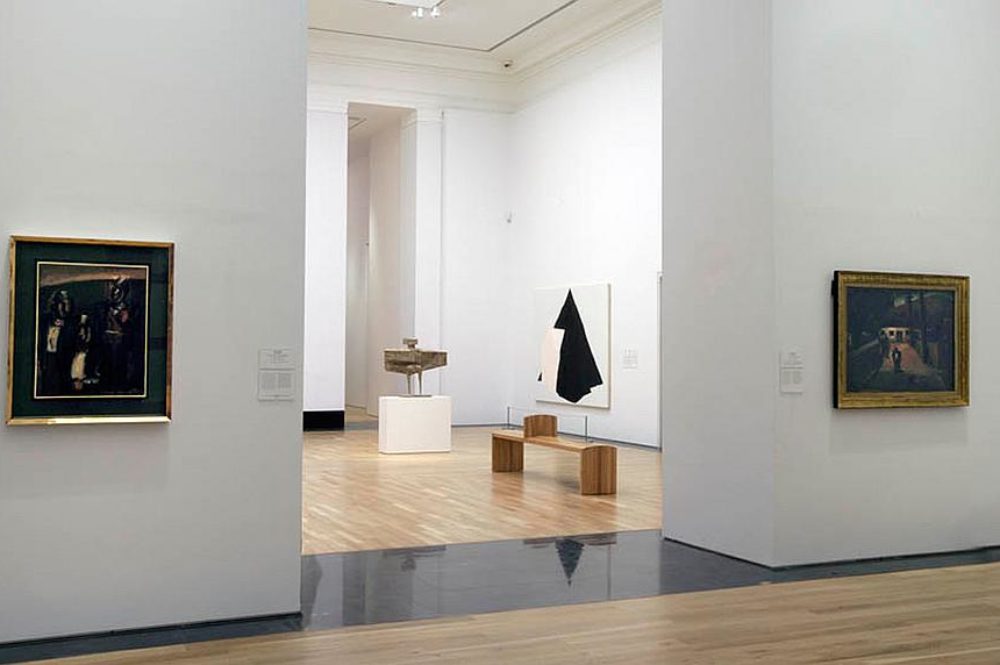INSIGHTS
Folkestone Harbour Arm Benches
The excitement of bespoke work is that you never know what you will be asked for. This commission to create thirty-two benches from recycled harbour fenders was certainly a first and presented us with a brief we could not resist. Folkestone Harbour is undergoing a massive regeneration, and the fenders that would have protected both the Harbour Arm and the docking liners of their time had been removed from the water. The challenge of this job was clearly laid down when Matthew first encountered the huge heap of wood on the dockside, in varying degrees of salvageable condition.
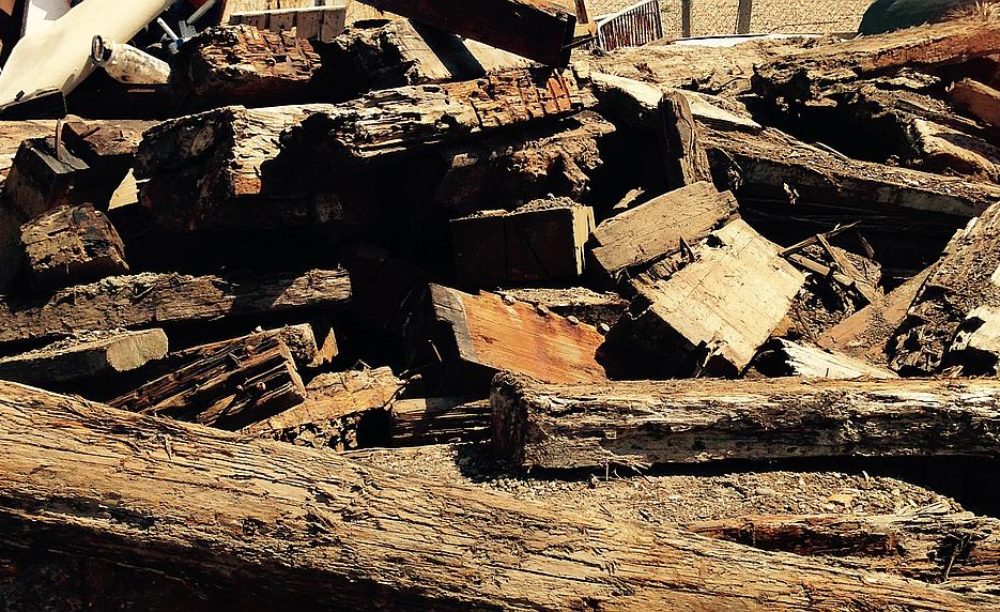
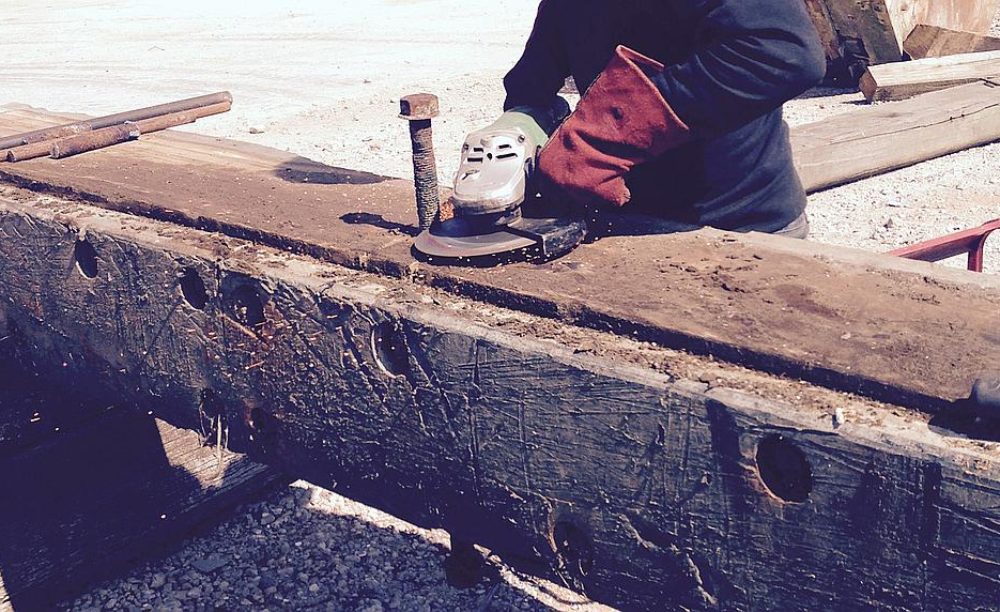
There is an old adage that claims there are four stages in a craftsman’s life. Apprentice, journeyman, master and… story teller. I am now such a wizened old fart that I often fall into the last category. I sometimes write stories/essays on some of the more interesting projects we undertake, here at Lime Tree Workshops under the name Matthew Burt. This project has been especially interesting. It has been logistically complex, creatively challenging and conceptually brave, involving chainsaw operaters, metal cutters, specialist drillers, heavy lifting specialists, engineers, project managers, carpenters, lorry drivers, wood bodgers/green timber specialists, furniture makers and me running round like a headless chicken being a bit of everything.
The first time I glimpsed the Folkestone Harbour Arm timber fenders I was a tad intimidated. They were vast, weather-beaten, mollusc-eaten, metal-entangled, time-eroded, lumps of what passed for tropical hardwood, that had stood in the air, sea and storm for a century or more, clamped to the harbour wall with a myriad of metal. They were awkward to lift, awkward to assess and were clearly going to be really cussed to manipulate into something useful to sit upon.
My first task was to get an overall impression of what was salvageable amongst the tangled pile of what many were thinking was only fit for burning. This timber was plundered from the tropical forests of the Empire and was clearly worthy of some form of memorialisation.
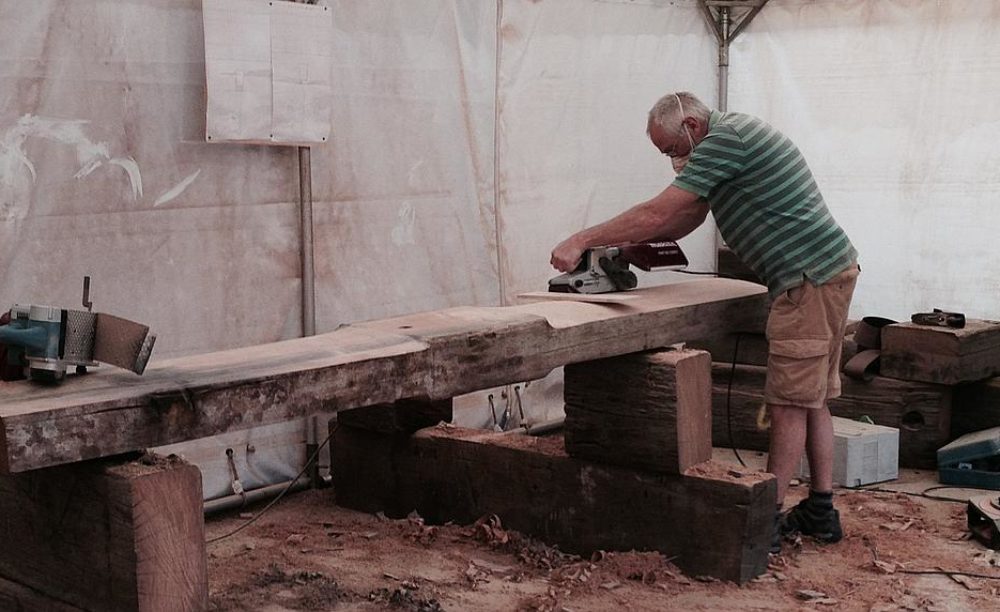
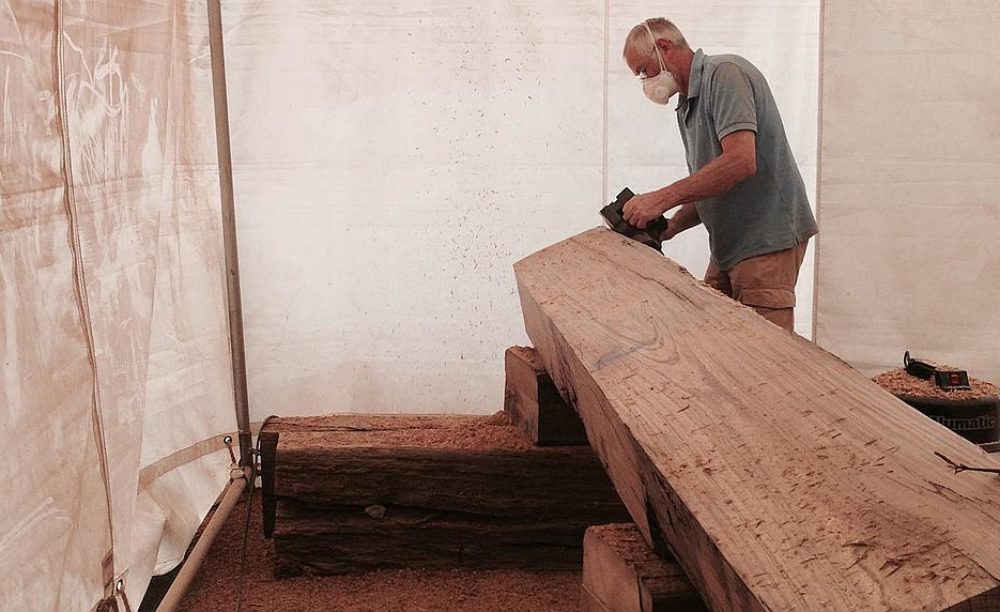
I spent a day looking over and photographing the twisted and forlorn heap of crazy angled timbers, piled high in the car park. I then retreated to the safety of my sketch book to explore possibilities. This is my place to ponder the impossible en route to discovering the feasible, making my absurd mistakes in private before stumbling towards the achievably worthwhile. Sketches were presented to the client and mulled over, the more fanciful honed down towards the more realistic. These were drawn up to scale, presented and approved.
The first thing to do was to bring order to that pile of fenders. At this stage these resembled an anarchic cacophony of precarious and dangerously heavy, metal spiked pick-a-sticks. The Harbour Arm staff got to work with the JCB and we got to work with a specialist chain saw operator and six spare chains in the event of hitting metal. Also present were a team of specialist metal salvage magicians with their acetylene torches, metal grinders, sledge hammers and guile. Between us we slowly began to cross-cut lengths into a growing pile of hopefully useful timbers. The chainsaw operator graciously accepted the inevitable as he often hit hidden metal, those spare chains came into their own. We eventually had two lorry loads of 3.5 metre lengths, some approximately 380mm x 380mm and others 380mm x 220mm. Most had the scars of their former existence upon them. They were riddled with holes from small to huge, chunks had been hewn out to accommodate hinges, straps, saddles, bolts and coach screws. The various wood eating molluscs had been hard at work for the last hundred years as had the inevitable erosion of sea, air and storm. All had taken their toll but looking into the end-grain of those fenders, before the lorry left for my Wiltshire workshop, I was full of hope. Their annular rings showed their slow determined growth towards maturity, some years good, others less so. This was very robust timber, still cracking as it slowly lost the moisture of a century in or near the sea but still strong and sturdy and fit for purpose.

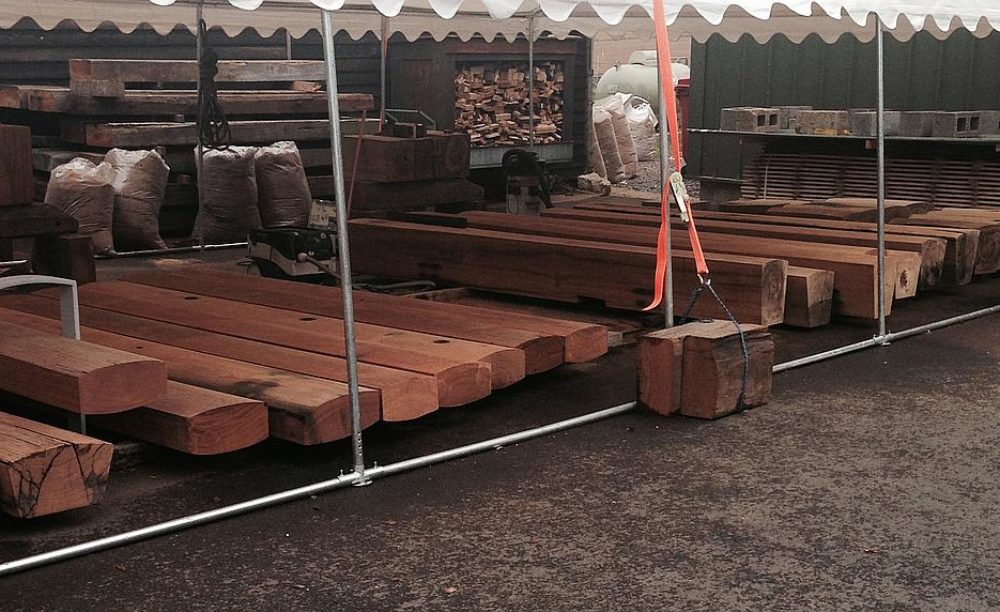
We erected a special marquee as a temporary work space in the courtyard of our workshops, to keep us dry as we tackled the next stage. Clearly no self-respecting sawyer was going to go anywhere near these timbers, as a breed they are notoriously nervous about their bandsaw blades hitting metal. Blades cost £300 a pop. Nor were we able to use the normal range of workshop woodworking machines. So we were left with no option other than the tried and tested leap into the unknown. Back came the specialist chain saw operator, the forklift and further reshuffling of that timber pile. Gradually we faltered towards our decisions as to which pieces were destined to become one of those thirty two benches for the Harbour Arm.
Chalk lines as guides, templates to sculpt to; small robust, top of the range, electric hand-held, machine planers; hand-held angle grinders to tackle the inevitable metal bolts and coach screws; abrasives discs to sculpt around the larger defects; belt sanders to smooth off the ridges and scoring left from the planing; and when all was lost, an axe, hand saw, mallet, chisel, spoke shave and plane. These were the means by which the benches emerged out of those life-worn fenders. Three dedicated makers over eight weeks, (and a further twelve over the last two days) with the help of the shuffling forklift, the aforementioned tools, ten large bags of dust and wood chips, one large bucketful of yet more ‘discovered’ metal coach bolts and screws, the loss of two finger nails to the cause and the daily dose of splinters, honed, hewed and sculpted their way to making thirty two benches.
The benches have enough beam strength not to warrant the need for any form of under frame. They were designed to be supported by simple metal frames that echoed the dovetail theme. This was fabricated by a local team to our design and decisions taken on methods of fixing and of its preservation. Before we could marry the timbers to their metal supports we had to tackle how we were going to cope with all those inevitable ‘defects’, better described as the honorary scars of time or the narrative of the timbers’ past use. I had immediately made the decision, on first sight of the fenders, that this would be best done by showing that narrative rather than trying to disguise it. Those stories were going to be filled with brass fillings set in a clear boat builder’s resin. In one case I left a view into a hole, created by rot around a piece of removed metal, by filling it with clear resin, so that a viewer could look into its past. I wanted the benches to tell their story.
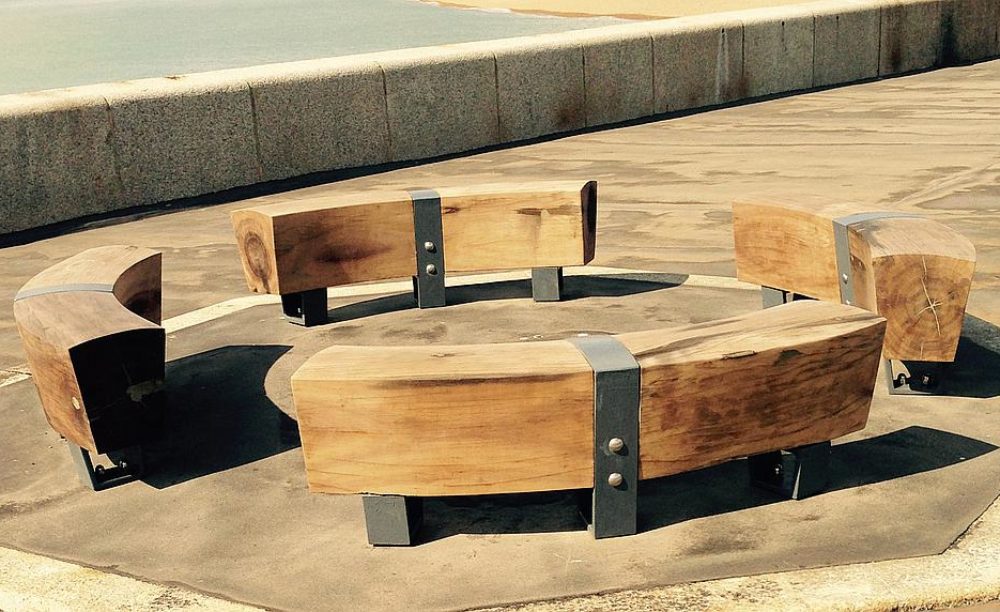

On the upper wind-and-wave-swept level of the Harbour Arm there is an octagonal structure, slightly raised, left from some past purpose, which prompted in me an idea. A sociable ‘conversational bench’ in the form of a circle, broken in four places to allow people into and out of that circle. This bench can be sat upon facing inwards, for group conversation, or facing outwards to gaze west towards Sandgate and beyond or eastwards, towards Dover and France. The section of this bench is the same dovetail shape as the other benches and with the same counter-intuitive curve on its upper surface. The latter is done to create comfort, to allow the water/rain to flow off them and most importantly of all, to allow people to face either way when sitting upon them. This simple curve is an idea I have used in benches for the Ashmolean at Oxford, the Courtauld at Somerset House, the National Museum Wales, the Craft Study Centre at Farnham and countless homes throughout Britain and it has that tried and tested comfort that is so desirable in seating. With the Harbour Arm Benches I have combined the dovetail, and all that has to say about woodwork, with the sensual convex curve, where the benches touch the body. ‘Seemingly simple whilst sensually sculptural’ is the aim.
Twenty-two people were involved in the various aspects of making the benches. As so often in the creative process they are the unsung and unseen hands that realise the idea. I wish to extend to each and every one of them my respectful and heartfelt thanks. Without them nothing would have happened. They will all share with me the joy of watching the visitors taking glorious possession of the Folkestone Harbour Arm Benches.
Matthew Burt August 2015
SIMILAR PROJECTS
Inspiring Views
We created this bench from sweet chestnut from the Hurtwood and Holmbury Hill site and arranged the fully accessible seating so visitors can sit out towards the view or inwards for sociable conversation…
Ashmolean Museum Bench
Like most briefs, this one had about it elements of the impossible. Seats must fit all sizes, for all occasions, in all situations. The element of the impossible is where the excitement resides…

